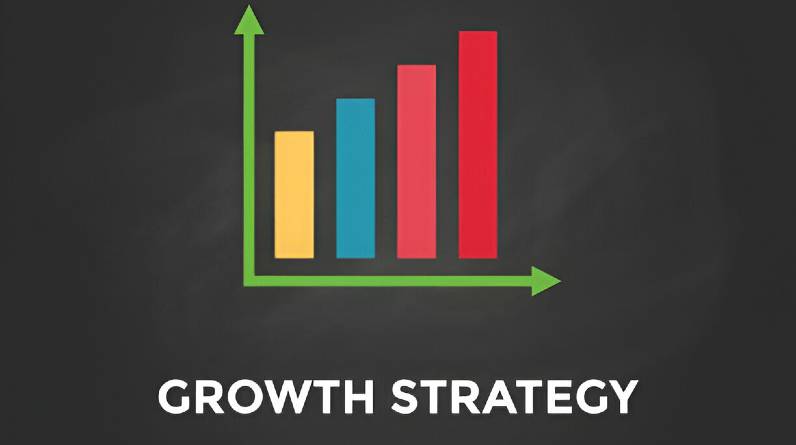
As we move towards 2030, businesses face the challenge of navigating an increasingly complex and dynamic market. The key to thriving in this environment lies in creating a growth strategy that not only addresses today’s realities but also prepares you for tomorrow’s opportunities and challenges. This article provides a roadmap for developing a robust growth strategy that will help your business stay competitive, resilient, and adaptable in the face of future uncertainties.
1. Understanding Your Customers: The Heart of Your Strategy
Customer-centricity is the cornerstone of any successful growth strategy. To develop an effective plan for 2030, you must first gain a deep understanding of who your customers are today and how their needs and expectations will evolve over the next few years.
Key Steps to Understand Your Customers:
- Identify Your Current Customer Base: Analyze your existing customers, their pain points, priorities, and how your product or service adds value to them.
- Anticipate Future Needs: Consider how emerging technologies, societal shifts, and global trends (like sustainability, AI, and digital transformation) may influence customer behavior by 2030.
- Unmet Needs: Identify any gaps in the market or opportunities where your business can meet evolving customer demands.
- Create Customer Personas: Develop detailed profiles of your ideal customers, considering future trends and technological shifts. This will help you tailor your products, services, and marketing efforts.
By focusing on your customers and understanding how their needs will change, you can ensure that your business is well-positioned to meet future demands and create long-term loyalty.
2. Know Your Competitors: Anticipating Future Challenges
To outmaneuver your competitors in the fast-evolving landscape of 2030, it’s essential to analyze not only the players in your industry but also those outside it. Industry disruption can come from unexpected sources, and staying ahead means keeping an eye on both traditional competitors and emerging players.
How to Assess Your Competitors:
- Evaluate Current Competitors: Understand their strengths, weaknesses, strategies, and customer base.
- Consider Non-Traditional Competitors: Look beyond your industry and assess how businesses in other sectors might encroach on your market share. For example, how might e-commerce giants or new tech startups impact your business?
- Track Market Movements: Stay informed about mergers, acquisitions, and new entrants that could reshape the competitive landscape.
Competitor analysis isn’t just about keeping an eye on immediate threats; it’s about anticipating where the market might go and positioning your business to stay ahead of the curve.
3. Anticipate Emerging Threats: Preparing for the Unexpected
As businesses plan for 2030, it’s vital to recognize that the landscape is likely to change dramatically. New technologies, changing regulations, and societal shifts could all create threats that disrupt established industries. Anticipating these threats allows your business to remain agile and prepared.
Emerging Threats to Watch:
- Technological Disruption: Technologies like AI, blockchain, and quantum computing could redefine industries and render existing business models obsolete. Stay informed about emerging tech trends and explore ways to leverage them in your operations.
- Regulatory Changes: As governments introduce stricter regulations, particularly around data privacy and environmental sustainability, your business must remain compliant and agile enough to adapt quickly.
- Market Shifts: Trends like climate change, global supply chain disruptions, and demographic shifts will continue to affect the market. Identify these trends early and think about how your business can adapt to mitigate risks.
While you can’t predict every threat, preparing for potential disruptions and having contingency plans in place will help you remain resilient in the face of uncertainty.
4. Scenario Planning: Embracing Multiple Futures
Scenario planning is a powerful tool for preparing your business for different possible futures. By creating multiple scenarios, you can explore a range of outcomes and develop strategies that will work across different market conditions.
How to Implement Scenario Planning:
- Create Multiple Scenarios: Develop three to five plausible future scenarios based on various factors like technological advancements, customer behavior changes, and market dynamics. Each scenario should explore a different set of circumstances that could impact your business.
- Identify Commonalities: Look for strategies that overlap across scenarios. These are your “no-regret” moves—actions that will benefit your business regardless of the future you’re preparing for.
- Be Flexible: Scenario planning is not about predicting the future with certainty but about preparing for uncertainty. By being flexible and agile, you’ll be ready to pivot your strategy as new information becomes available.
This exercise helps businesses avoid the trap of “linear thinking” and instead prepares them for a broader range of possibilities.
5. Building Agility into Your Business Model
In today’s fast-paced world, agility is a critical component of a successful growth strategy. To thrive in 2030, your business must be able to quickly adapt to changes in customer needs, market conditions, and emerging technologies.
How to Build Agility:
- Streamline Decision-Making: Flatten hierarchies and empower teams to make decisions quickly without going through cumbersome approval processes. This accelerates your ability to respond to market changes.
- Monitor Key Metrics: Regularly track market trends, customer feedback, and competitor performance to stay on top of potential opportunities or risks.
- Invest in Technology: Leverage tools and platforms that enhance operational flexibility, such as AI-driven analytics, cloud solutions, and automation.
An agile business can quickly pivot when needed, allowing it to seize opportunities faster than its competitors while minimizing the impact of unforeseen threats.
Conclusion: Preparing Your Business for 2030 and Beyond
Building a growth strategy for 2030 requires more than just anticipating future trends—it requires a commitment to continuous learning, agility, and customer-centricity. By understanding your customers, keeping a close eye on competitors, anticipating emerging threats, engaging in scenario planning, and fostering a culture of agility, you can position your business for success in the decade ahead.
By proactively addressing these elements, businesses can not only survive the complexities of 2030 but thrive in them. The future may be unpredictable, but with a robust and flexible strategy, you can confidently navigate the challenges and seize the opportunities that await.






